“Spend more time doing things that make you forget about the time.”
― Charlotte Eriksson
I felt indulgent purveying the wondrous synthetics at Portland’s independent retailers because Maryhill’s staff had thoughtfully received a grant for each artist’s supply budgets. As expected, perfect river fabric revealed itself and I latched onto my precious bolt of acetate. I didn’t yet know how much yardage I required, but I did know this fabric was exactly what I wanted. I decided three yards of 52” wide fabric would get me started. There was only two and three fourths' yards. This turned out to be the perfect amount. Serendipity occurs a lot in my art practice.
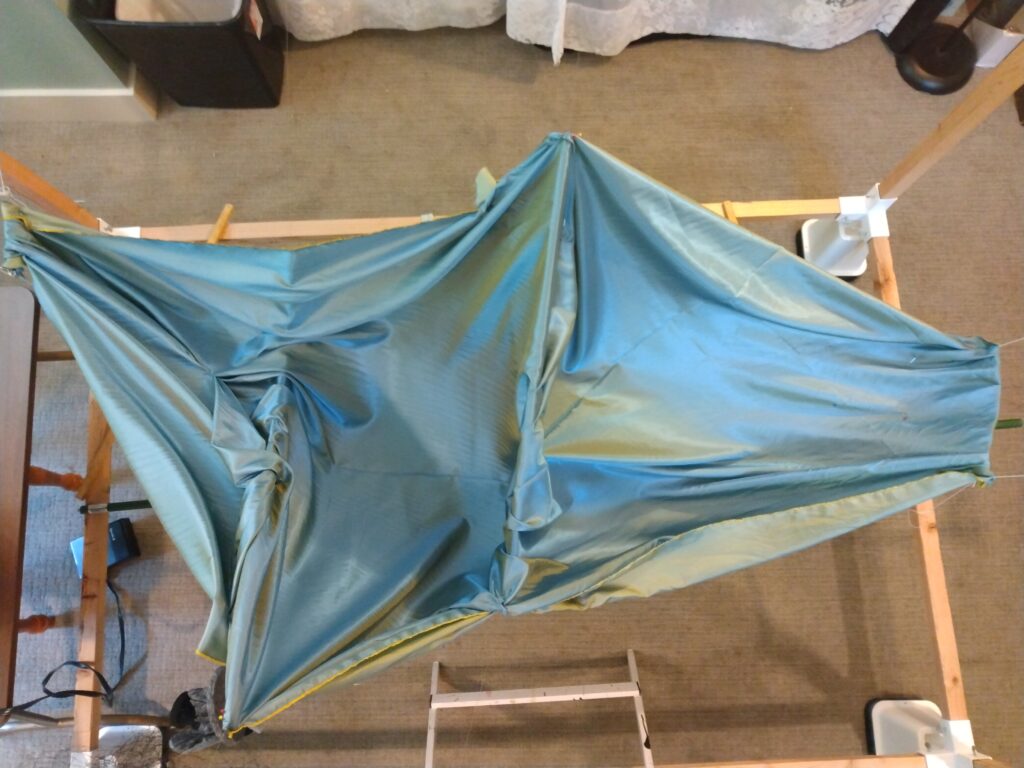
The subtle blue fabric enticed me with its green iridescent tint. The fact that it was opaque with hint of translucence met my specifications for water. Its smooth hand was perfect for the textured waves I envisioned applying with my pleater, but how would acetate yarns withstand the elements of light, moisture and wind? I went home with my treasured fabric and applied scientifically proven research techniques for 30 days.
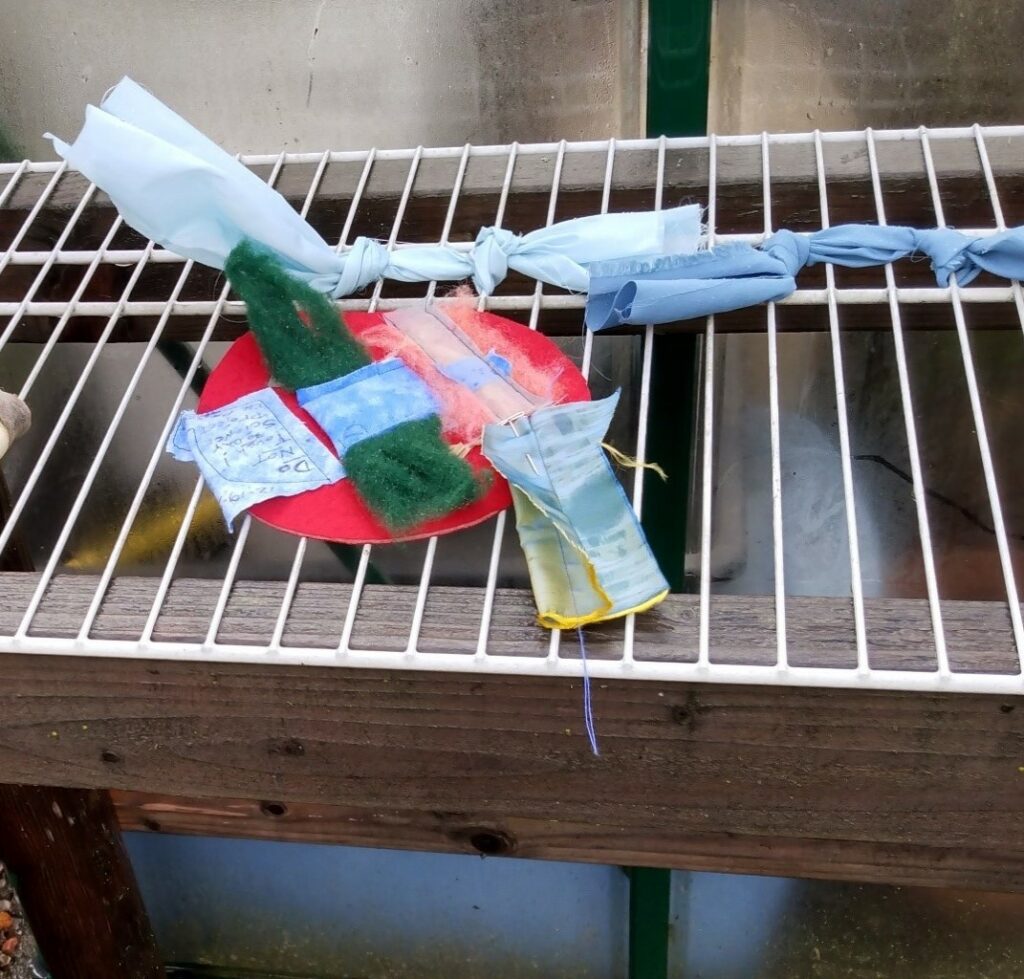
Acetate, wool, cotton, polyester and bonded samples were placed outside and documented to learn the elements effects on each. The wool faded in the December sun and the stiffener I applied made the river fibers brittle. My lovely blue green acetate would require sewing rather than stiffening to retain my intent. This process would add an entire week’s work to the overall sculpture. I love hand sewing, so this would be fun, but the exhibit deadline was arriving quickly!
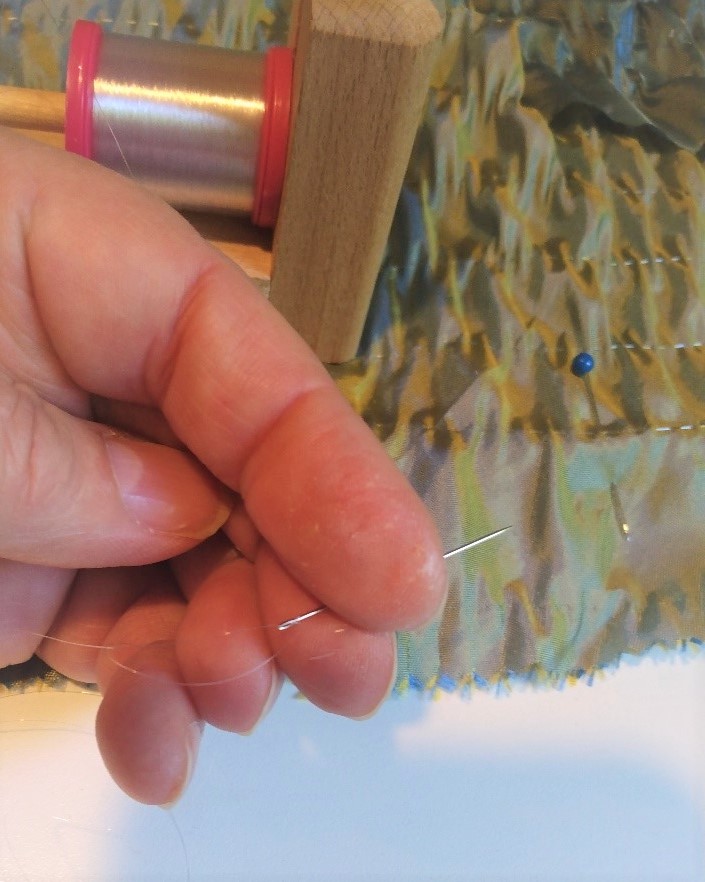
I hand pleated and embroidered a small swatch using the traditional English smocking method to test my plan. This did not achieve the wavy look I desired, so I tried a different technique called a tailor’s padding stitch. This stitched help the pleated acetate well! One final sample told me to pleat on the bias rather than the straight-of-grain, for bias pleats provided the most realistic fabric waves.
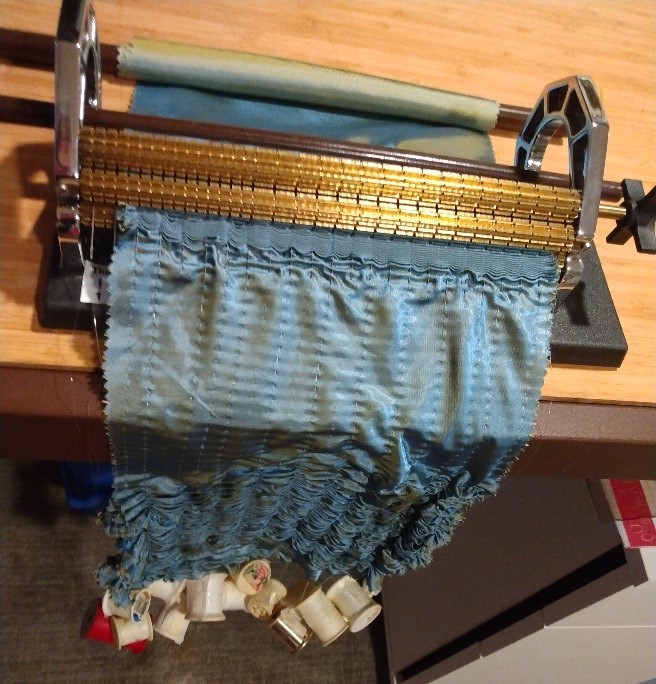
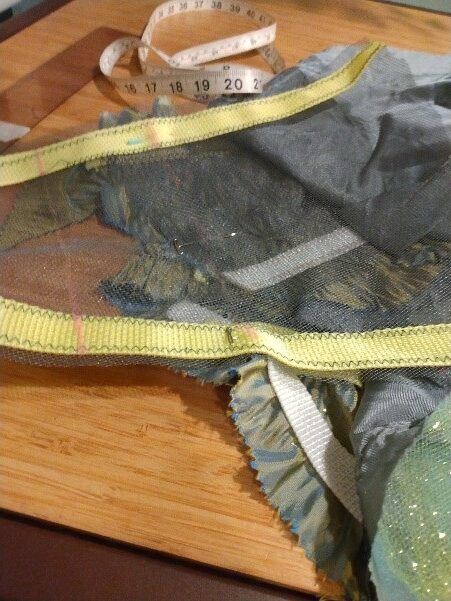
The underwater surface of the river was implied by machine stitching 9” – 12” wide pieces lengths of sheer and opaque fabrics. These fabrics emphasize underwater currents and, like real water, move during viewing. All this pleating and stitching ultimately required two 40-hour weeks and 700 yards of monofilament thread.
Coming soon: Sculpting the sky.

